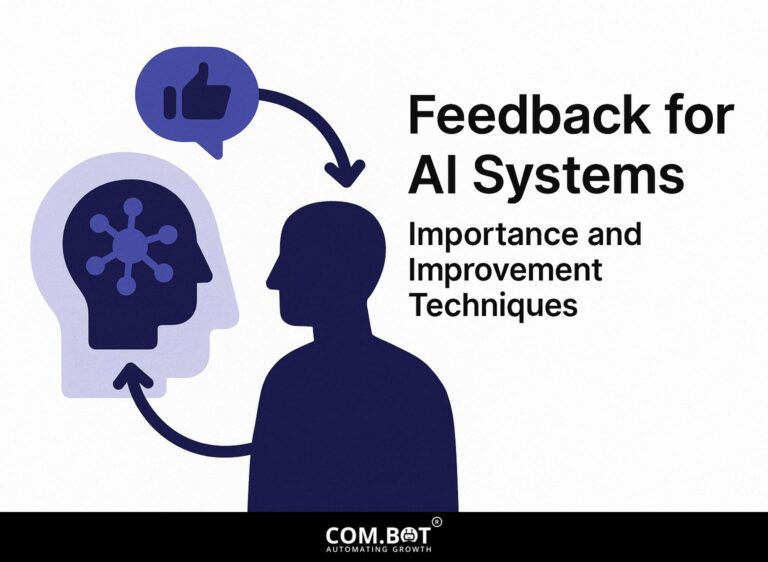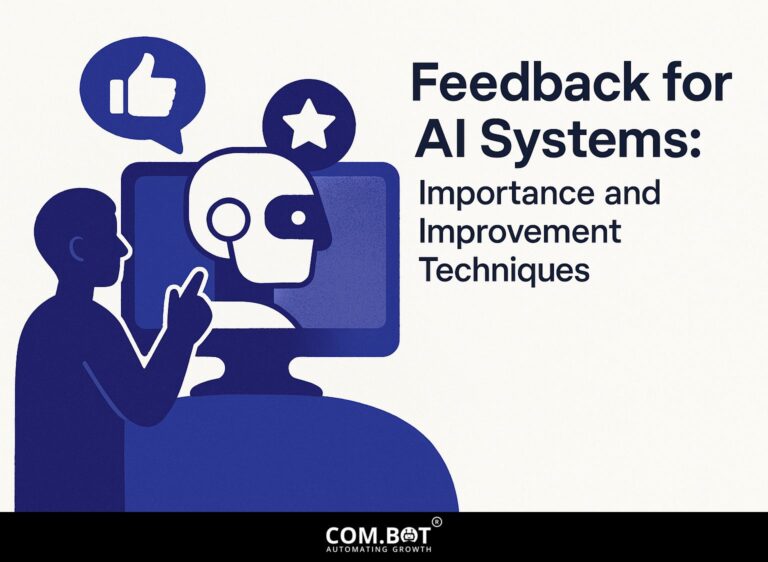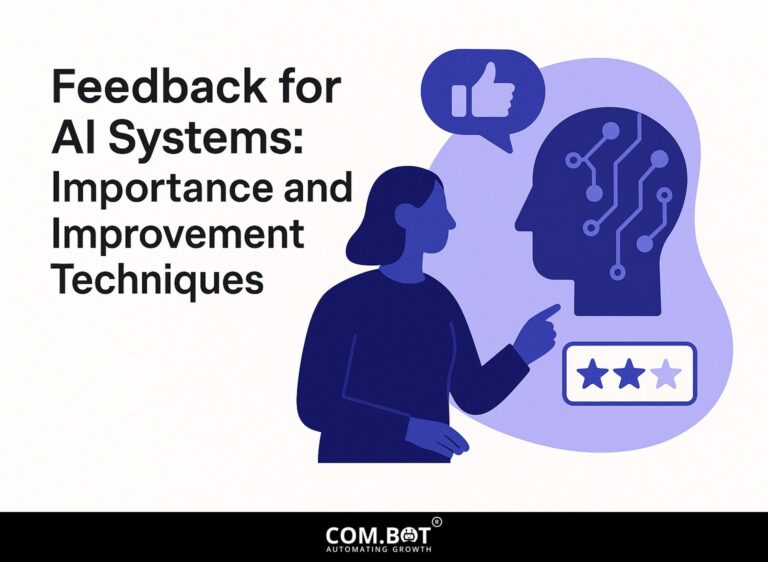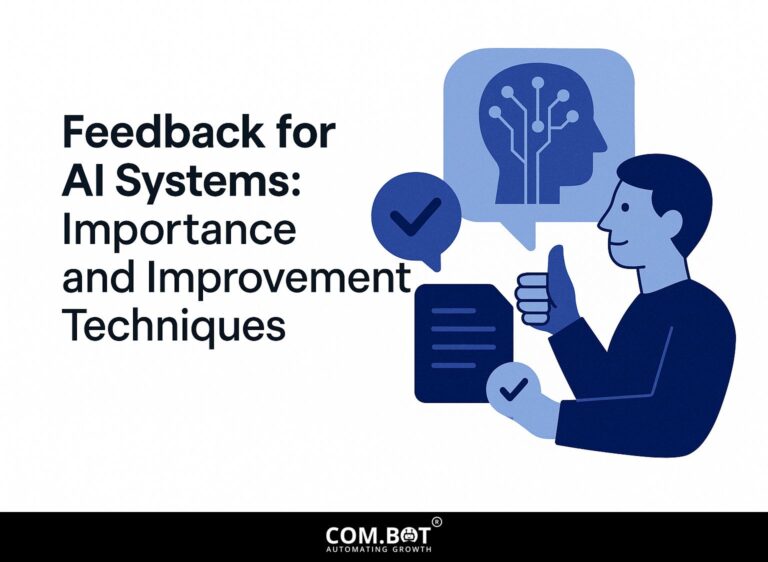Feedback for AI Systems: Importance and Improvement Techniques
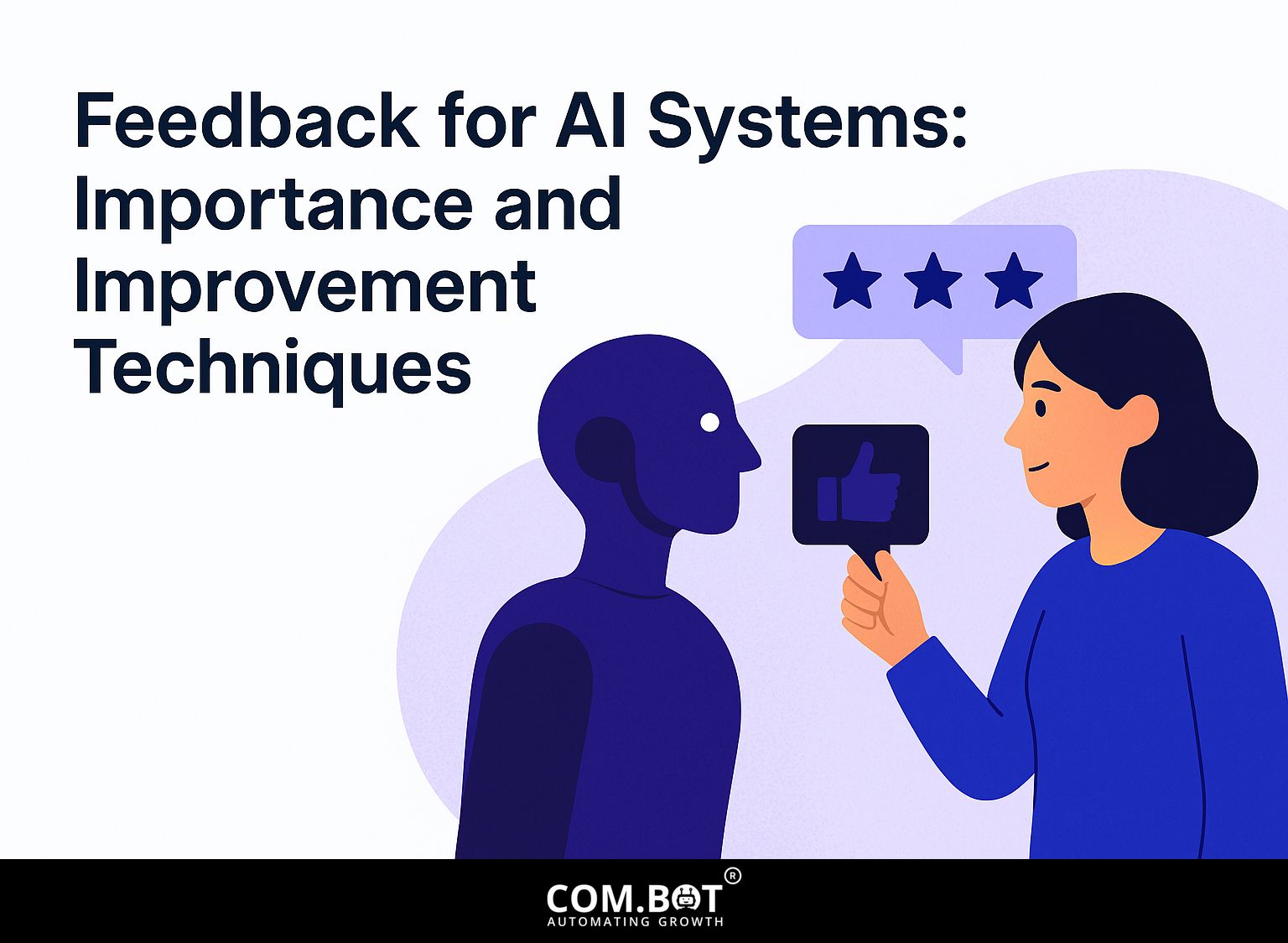
As artificial intelligence grows rapidly, the AI feedback loop is important for making machine learning systems better. By including human input, we can improve model performance and keep making it better. This article looks into the importance of feedback in AI systems, discussing practical methods to collect information that improves accuracy and strength. Learn how using feedback can make AI systems more intelligent and responsive.
Key Takeaways:
- 1 The Importance of Feedback
- 2 Types of Feedback Mechanisms
- 3 Techniques for Gathering Feedback
- 4 Implementing Feedback for Improvement
- 5 Challenges in Feedback Integration
- 6 Next Steps in Feedback for AI Systems
- 7 AI Feedback System Statistics
- 8 Frequently Asked Questions
- 8.1 What is the importance of feedback for AI systems?
- 8.2 How can feedback help in improving AI systems?
- 8.3 What are some techniques for giving feedback to AI systems?
- 8.4 Why is it important to continuously collect and analyze feedback for AI systems?
- 8.5 How can we make sure that feedback for AI systems is helpful and works well?
- 8.6 What are the potential consequences of not incorporating feedback into AI systems?
The Importance of Feedback

Feedback is essential for AI to work well. It improves accuracy by helping the system learn all the time.
For example, self-driving cars improve their routes by analyzing data as it comes in. Related insight: Feedback for AI Systems: Importance and Improvement Techniques
Enhancing Accuracy and Performance
AI systems improve their accuracy significantly-by up to 25%-with the right feedback mechanisms in place, utilizing metrics from user interactions.
For example, companies such as Netflix and Spotify examine what users watch and listen to in order to improve their recommendation systems. By tracking clicks, skips, and user ratings, they adjust content suggestions almost in real-time.
Tools like Google Analytics and Mixpanel are very important; they provide information on user behavior that can help adjust algorithms. Creating a system for receiving feedback improves how users interact with the service and keeps them interested, which helps make AI systems better and more efficient.
Facilitating Continuous Learning
Continuous learning in AI relies on feedback, enabling systems to change and learn from fresh data-important for use in healthcare and finance.
In reinforcement learning, algorithms like Q-learning and Proximal Policy Optimization (PPO) exemplify this process.
For example, in healthcare, an AI system can examine patient data and change its methods based on the results of treatments, using this experience to make better decisions later.
In finance, a trading algorithm might change its strategy based on how the market behaves, learning to make better trades as time goes on.
AI gets better at making decisions through repeated feedback, which increases how well and accurately it works.
Types of Feedback Mechanisms
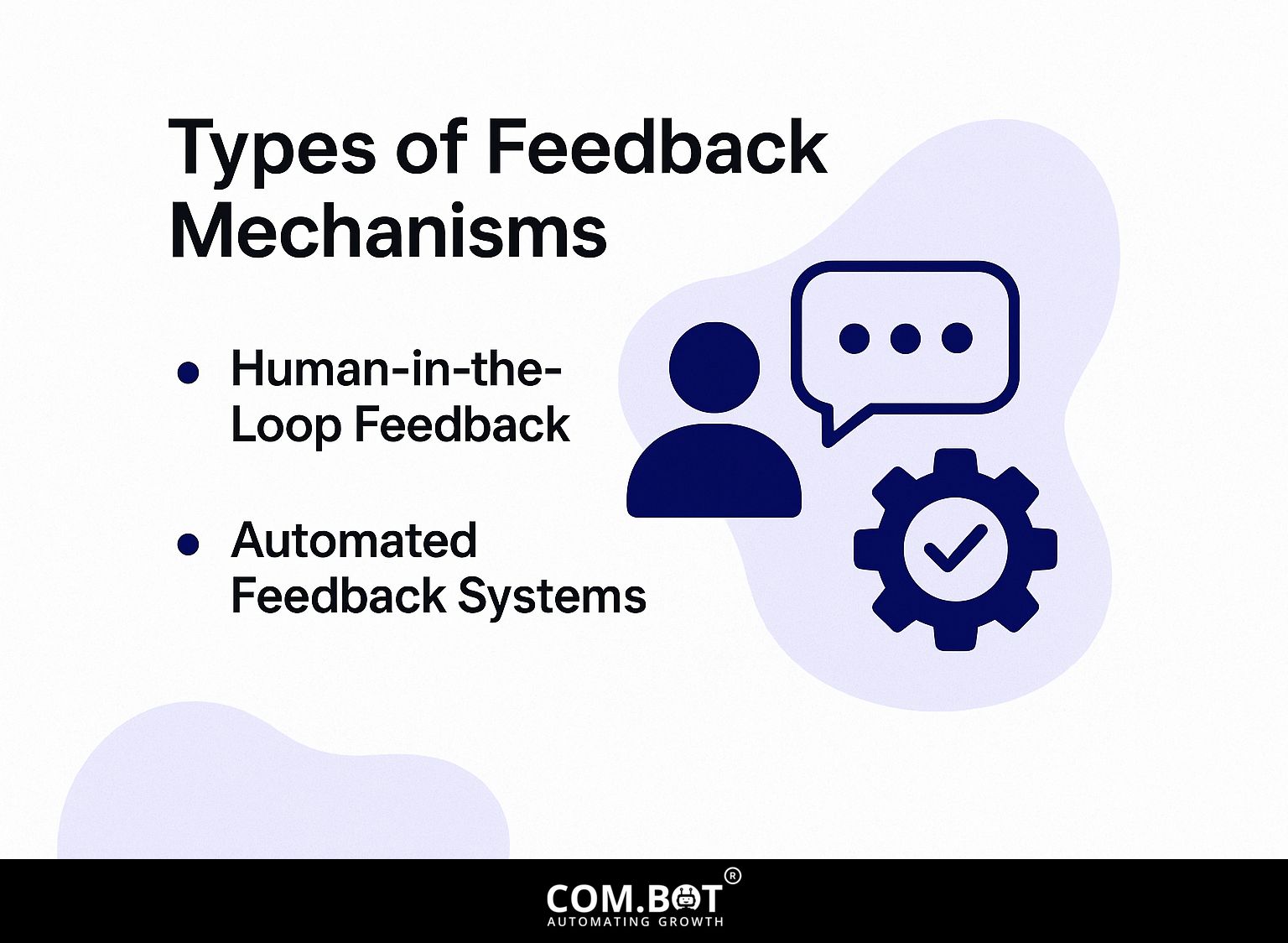
Recognizing the different types of feedback methods is important for improving AI performance-these methods range from involving humans in the process to systems that work entirely on their own. For those interested in exploring how feedback can enhance AI systems, our expert opinion piece delves into their importance and improvement techniques.
Human-in-the-Loop Feedback
Human feedback mechanisms help AI systems by incorporating human knowledge and blending it with data analysis to achieve better results.
Tools like Label Studio let users mark data examples, giving important information on cases the AI might overlook. Using annotators helps improve AI’s predictions a lot.
Having humans check AI results before they are used can improve accuracy. Holding regular meetings with team members to evaluate AI decisions helps the technology develop in a way that aligns with practical uses.
This teamwork connects machine processing with human comprehension.
Automated Feedback Systems
Automated feedback systems adjust algorithms based on user actions and performance information as they occur, making AI results more reliable.
In online shopping, tools like Google Analytics show information about how users act, measuring things like the number of page views and how often visitors complete purchases.
By connecting this information with a tool like Optimizely, businesses can run A/B tests on website changes to see which versions work best.
In finance, platforms like Tableau let users see market trends in real time, which helps make better decisions.
These tools gather information and help make quick changes to plans, which improves how users interact and benefits businesses.
Techniques for Gathering Feedback
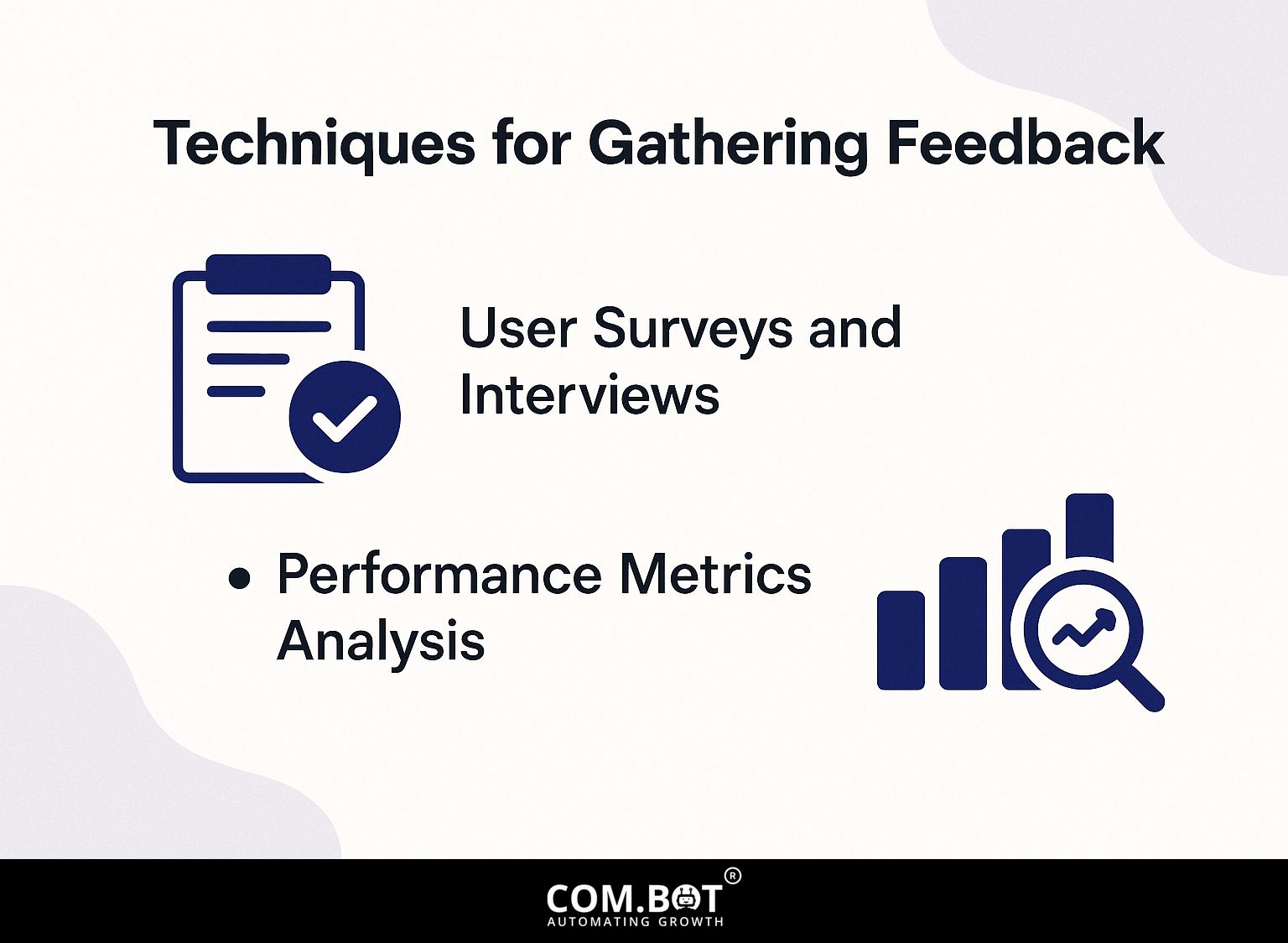
Gathering feedback effectively is important for AI systems to succeed. This involves using methods like user surveys and analyzing performance measurements. To delve deeper into effective strategies, discover our complete strategy for feedback techniques in AI systems with practical examples.
User Surveys and Interviews
When put together correctly, user surveys can provide useful information to improve AI systems by gathering feedback that might otherwise be overlooked.
To create effective user surveys, begin by identifying your goals. Ask open-ended questions like, “What features do you find most useful?” and closed questions like, “On a scale from 1 to 10, how would you rate our service?”
Use platforms like Typeform or Google Forms for user-friendly interfaces. After collecting data, examine responses with tools like Excel for numerical information and use thematic analysis for non-numerical feedback.
This method explains user feelings and helps make changes based on what users want.
Performance Metrics Analysis
Analyzing performance metrics allows AI developers to pinpoint inefficiencies, with tools like Tableau providing powerful data visualization capabilities.
To effectively monitor performance, focus on key metrics such as user engagement, conversion rates, and system response time.
Google Analytics is excellent for tracking user behavior on your application, while Tableau can visualize trends and anomalies in large datasets.
By checking these measurements often, developers can decide what changes to make, like improving popular features or fixing slow system performance.
Establish a routine for analysis, like weekly reviews, to stay ahead of potential issues and improve overall user experience.
Implementing Feedback for Improvement
Using feedback effectively needs a clear plan for repeated improvements, allowing for continuous progress and changes in algorithms.
Iterative Development Processes
Using step-by-step development methods lets teams slowly include feedback, which helps improve AI systems through organized improvement phases.
Teams can follow the Agile sprint approach by dividing their projects into smaller, easy-to-handle steps. Typically, each sprint lasts 1-4 weeks, during which specific features are developed.
At the end of each sprint, hold a meeting to look over progress and get feedback from the team. Tools like Jira can facilitate tracking tasks and collecting feedback effectively.
By focusing on working together and making regular improvements, teams can gradually make their AI systems better suited to what users need and expect.
Challenges in Feedback Integration
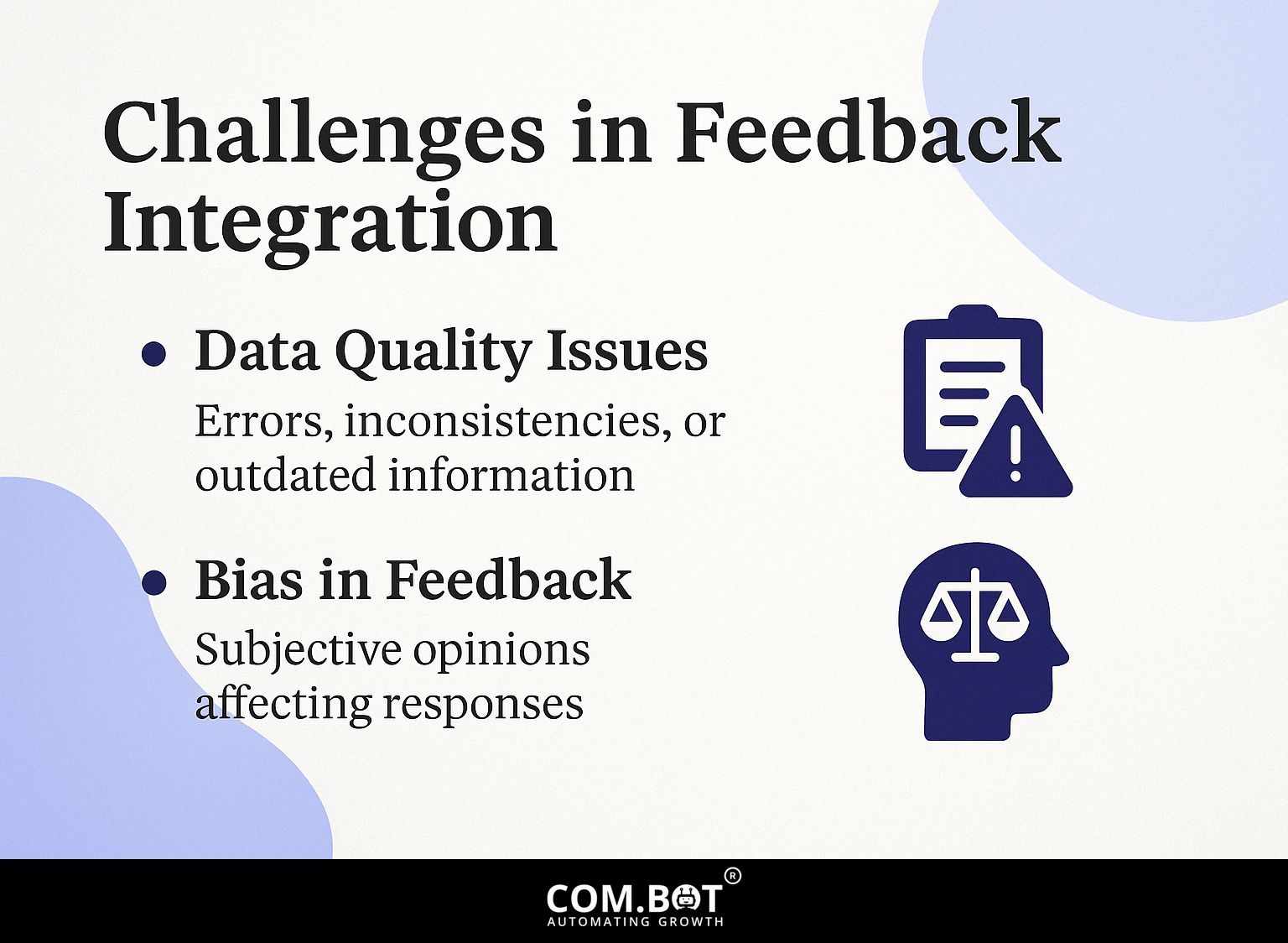
Even though it is important, adding feedback to AI systems has some difficulties, especially with problems related to data quality and bias in feedback methods. These challenges are particularly evident in systems providing multilingual support, where biases can influence outcomes. A deeper understanding of these issues can be gained by examining the AI Chatbots: Multilingual Support.
Data Quality Issues
Problems with data quality can greatly affect how AI works, and up to 70% of AI projects don’t succeed because of weak data management methods.
Common data quality problems include duplicate records, incomplete data, and inaccuracies. To tackle these, start with data cleaning techniques like deduplication and normalization.
Tools like Trifacta, OpenRefine, and Talend can do most of this work, allowing you to focus on verifying the data. Implementing regular audits and establishing data entry standards will also help maintain quality over time.
Trifacta’s data profiling tools can find unusual data points early, which is important for keeping your AI models accurate.
Bias in Feedback
Bias in feedback systems can cause incorrect AI behavior, so it’s important to identify and fix cognitive biases in human feedback.
To counteract these biases, consider the following strategies:
- Get feedback from different groups of people to get a more balanced view.
- Implement structured feedback forms that guide respondents to answer specific questions rather than open-ended ones, reducing ambiguity.
- Use tools like UserTesting or Optimal Workshop to gather information in a structured way.
Make sure ethical AI issues are given importance by routinely checking feedback methods to find and reduce biases that might influence AI learning and results.
Next Steps in Feedback for AI Systems
New methods using AI for feedback are showing potential, as they improve on traditional systems. To delve deeper into these advancements, you might explore the importance and techniques for enhancing AI feedback systems.
AI Feedback System Statistics
AI Feedback System Statistics
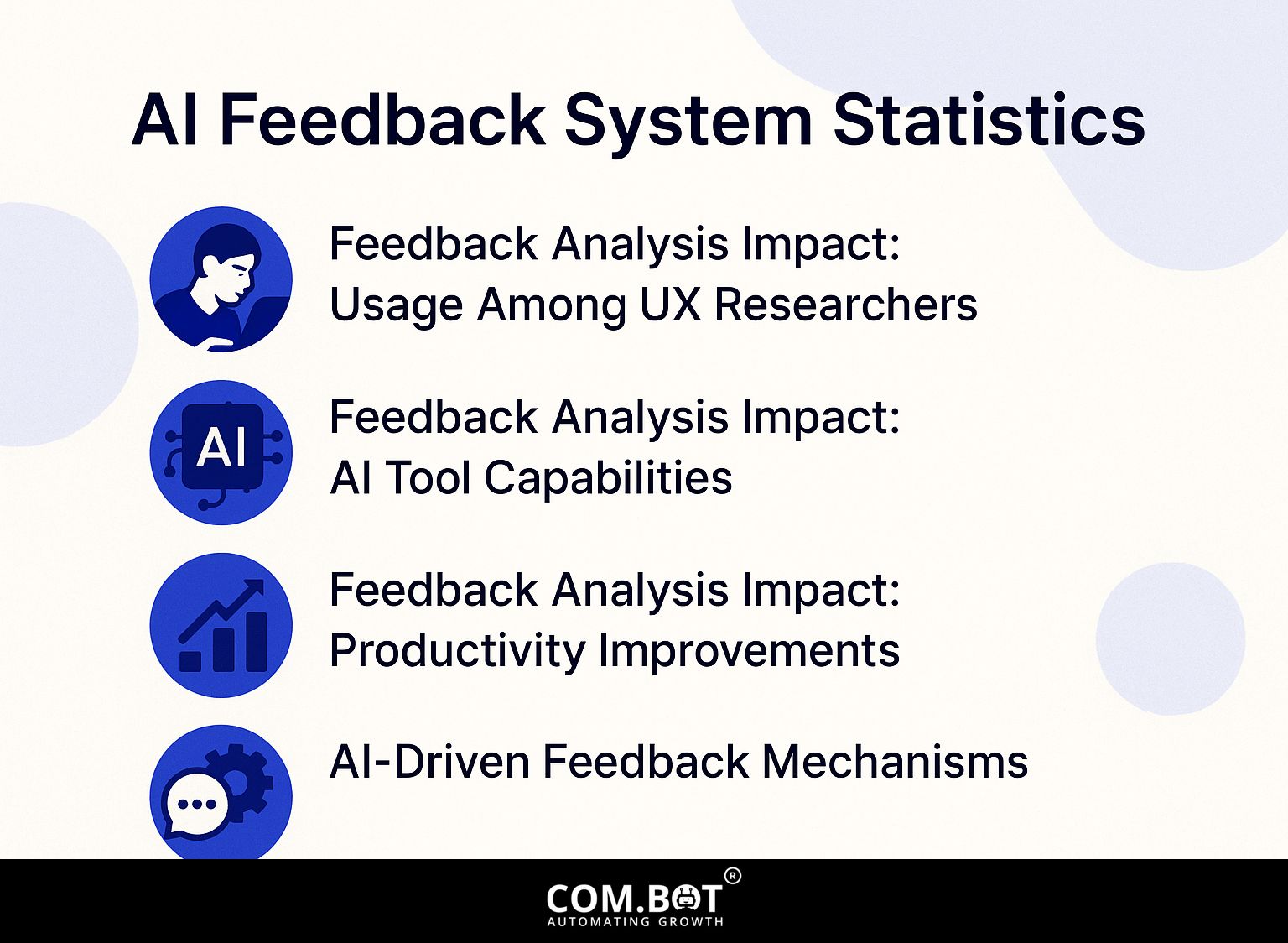
Feedback Analysis Impact: Usage Among UX Researchers
Feedback Analysis Impact: AI Tool Capabilities
Feedback Analysis Impact: Productivity Improvements
The AI Feedback System Statistics give a detailed look at how AI tools are used in studying feedback, especially by UX researchers. The statistics show how AI is currently used and how it can improve research work and efficiency.
Feedback Analysis Impact begins with usage statistics among UX researchers, where 51% are currently using AI. This reflects a significant adoption rate, suggesting that AI is increasingly considered essential for efficient feedback analysis. Furthermore, 91% are open to expanding AI use, indicating a strong inclination towards integrating more AI capabilities due to perceived benefits in accuracy and efficiency.
- AI Tool Capabilities: AI tools offer substantial improvements in feedback analysis efficiency. For instance, theme detection reduces review time by 80% This helps teams find important information from feedback fast, without having to go through a lot of data by hand. Additionally, AI’s multilanguage processing accuracy at 90% supports global research efforts, ensuring reliable analysis across different languages and enhancing cross-cultural studies.
- Productivity Improvements: The integration of AI leads to marked increases in productivity, with a 30% increase in decision-making speed and 40% reduction in operational tasks. These improvements allow UX teams to focus more on strategic initiatives rather than being bogged down by repetitive tasks. Notably, AI tools save 18 hours per sprint, showing how much time you can save and use for new ideas and improving quality.
The AI Feedback System Statistics highlight the significant changes AI brings to feedback analysis, showing how it improves speed, accuracy, and output. As more researchers start using AI, there are increasing opportunities for improvements and use in UX research, leading to more efficient and flexible practices.
AI-Driven Feedback Mechanisms
AI feedback tools are changing the way AI systems learn by enabling immediate responses and changes based on how users interact with them.
These systems improve AI performance by examining user inputs and adjusting models based on them. For example, the chatbot in Duolingo uses user corrections to improve its language algorithms, resulting in a 20% rise in user participation.
Likewise, Netflix uses viewer habits to adjust recommendations, achieving a 75% success rate in keeping subscribers.
While these systems offer significant advantages, they also present challenges, such as data privacy concerns and the potential for bias in training sets. Businesses need to balance listening to customer comments with ensuring AI is applied in a responsible manner.
Frequently Asked Questions
What is the importance of feedback for AI systems?
Feedback is important for AI systems because it helps make them work better and more accurately. The system learns from errors and changes its actions, resulting in improved choices and results.
How can feedback help in improving AI systems?
Feedback gives important information to AI systems, helping them find and fix any mistakes or biases in their algorithms. This results in ongoing improvement and keeps the system making decisions that match its goal.
What are some techniques for giving feedback to AI systems?
Some techniques for giving feedback to AI systems include providing clear and specific data points, using diverse data sources to avoid biases, and incorporating human feedback to supplement the system’s learning.
Why is it important to continuously collect and analyze feedback for AI systems?
Gathering and examining feedback all the time helps AI systems learn from new situations and data. This keeps the system working well and correctly over time, instead of becoming old or not useful.
How can we make sure that feedback for AI systems is helpful and works well?
To get helpful feedback, it’s important to involve a variety of evaluators, frequently check and improve the system’s algorithms, and clearly know the system’s aim and purpose.
What are the potential consequences of not incorporating feedback into AI systems?
If AI systems do not use feedback, they may make unfair decisions, produce incorrect results, and users might not trust them. This can have significant impacts on industries that heavily rely on AI technology, such as healthcare and finance.

